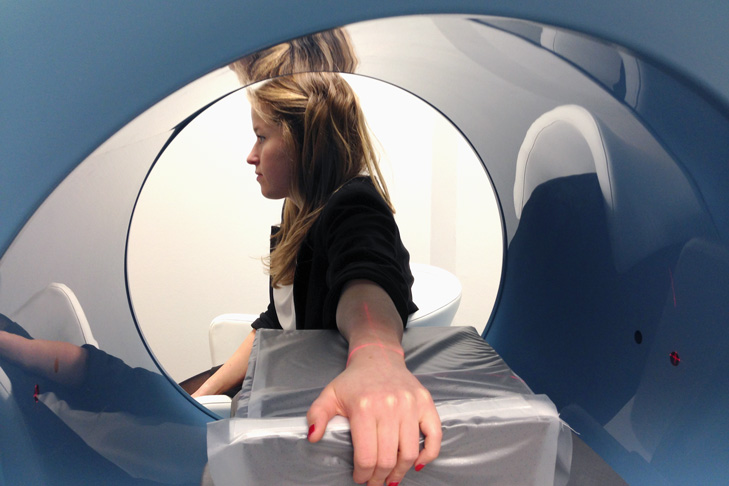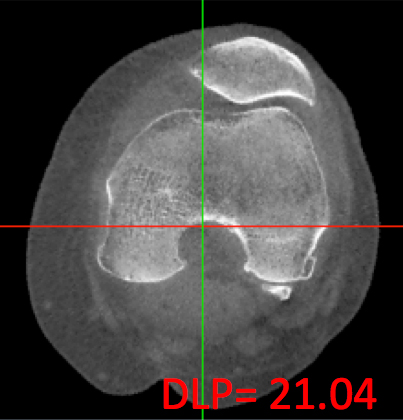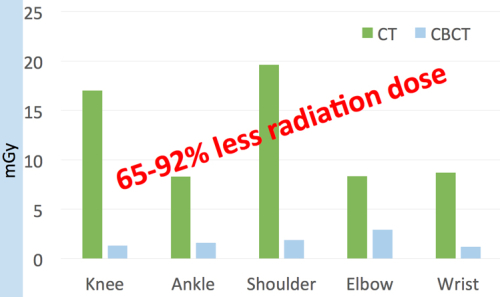Amanda Smith BSc1, Maria Cavadas BSc1, Shahed Khan MPhil2, Veronique Sauret-Jackson MSc PhD1 1Cavendish Imaging Ltd, 2Radiation Consultancy Services Ltd.
Radiation Dose Comparison of CBCT and CT Extremity Scans

“Could CBCT provide a sufficient alternate to Conventional CT?”
In current clinical practice Cone Beam CT [CBCT] is prolifically used for dental and maxillofacial conditions, however research shows that CBCT could be advantageous over CT for scanning extremities.
Conventional CT uses a fan beam and the X-ray tube rotates around the patient several times in order to obtain the scan acquisition1. CBCT however, uses a cone-shaped beam and different kV and mAs settings in order to obtain the scan from a single rotation. This delivers a lower radiation dose.
Patient positioning for a CBCT wrist examination with the NewTom 5G

METHODS
The Dose Length Product [DLP] readings and the corresponding scan length were recorded retrospectively for extremities imaged with the NewTom 5G and the GE VCT. The DLP/Scan Length ratio was used to standardise the DLP readings and give a ‘dose score’ for comparison.
Dose Score Comparison (mGy)

RESULTS
Fig 3 and 4 show an example of the visual appearance for a knee axial slice and corresponding DLP readings. The analysis of dose for each area of interest revealed that the CBCT scores were 65-92% lower than the scores from conventional CT.
Fig 3 CBCT Axial Knee

Fig 4 CT Axial Knee

CONCLUSION
When comparing doses between CBCT and conventional CT scanners using the DLP/Scan Length as the score, findings suggest that the radiation dose to the patient undergoing an extremity CT scan is significantly higher than that delivered to the patient undergoing CBCT.
Dose Score Comparison (mGy)

It is your attention to detail and high quality scans that set you apart from your competitors
Quickly seen, no delay. Most welcome
I regularly refer patients to Cavendish Imaging for radiographs and cone beam CT. The staff are knowledgeable, helpful and also kind.
The operative, could not have been more helpful and nice. Also, the staff I spoke to on the phone were polite and most helpful. Very happy with the visit
Thank you for being so kind and helpful throughout. I had issues getting to the appointment and your kindness and patience was much appreciated
Friendly, fast, professional service. Thank you!
Walk-in clinic was very convenient and waiting time was very short.Thank you
Came in with my daughter for her mouth to be scanned, both radiographers were really good with her, taking time to talk to her, explain things and put her at ease, much appreciated
Overall a very prompt and efficient service
I was very promptly seen on arrival at the London walk-in service, the whole process required minimal time.